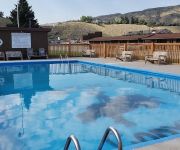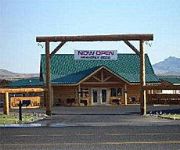Facts and Data
Webpages:
Official Unesco Page
View photos from OUR PLACE the World Heritage collection
World Heritage in the United States
Yellowstone National Park (U.S. National Park Service)
Protectedplanet.net
Basis Data:
Unesco World heritage since: 1978
Size of heritage: 898,349 ha
Coordinates:
Longitude: -109,172°
Latitude: 44,461°
Summary
The vast natural forest of Yellowstone National Park covers nearly 9,000 km2 ; 96% of the park lies in Wyoming, 3% in Montana and 1% in Idaho. Yellowstone contains half of all the world's known geothermal features, with more than 10,000 examples. It also has the world's largest concentration of geysers (more than 300 geyers, or two thirds of all those on the planet). Established in 1872, Yellowstone is equally known for its wildlife, such as grizzly bears, wolves, bison and wapitis.
Location on Map
Show bigger map on Openstreetmap
Yellowstone National Park: A Natural Wonder
Yellowstone National Park, located in the northwest corner of the State of Wyoming, along with relatively small adjacent areas of the States of Montana and Idaho, is a UNESCO World Heritage site renowned for its exceptional natural beauty and unique geothermal features. Established in 1872, it holds the distinction of being the first national park in the United States and indeed, the world.
Historical Significance
The history of Yellowstone National Park is deeply intertwined with the conservation movement in the United States. In the mid-19th century, explorers and adventurers began to document the park's extraordinary geysers, hot springs, and wildlife. Their accounts captivated the public's imagination, leading to the establishment of the park by an act of Congress in 1872. This groundbreaking decision set a precedent for the preservation of natural landscapes for future generations.
Yellowstone's historical significance extends beyond its conservation legacy. The park also holds cultural importance for Native American tribes, including the Shoshone, Bannock, and Blackfeet. These tribes have long-standing connections to the land, considering it sacred and utilizing its resources for sustenance and spiritual practices. Today, their cultural heritage is recognized and respected within the park.
Natural Wonders
Yellowstone National Park is a treasure trove of natural wonders. Its most iconic feature is the Yellowstone Caldera, one of the largest active volcanic systems in the world. This supervolcano fuels the park's geothermal activity, resulting in the famous geysers, such as Old Faithful, which erupt with remarkable regularity.
The park's geothermal features are complemented by its diverse wildlife. Yellowstone is home to an impressive array of species, including grizzly bears, wolves, elk, and the largest free-roaming herd of bison in the United States. The park's commitment to wildlife conservation has led to the successful recovery of several endangered species, making it a vital sanctuary for biodiversity.
Current State and Conservation Efforts
Today, Yellowstone National Park faces numerous challenges in preserving its natural and cultural heritage. Climate change poses a significant threat, altering the park's ecosystems and impacting wildlife populations. The park's management actively monitors and mitigates these effects, striving to maintain the delicate balance of its unique environment.
Conservation efforts in Yellowstone extend beyond climate change. The park's management focuses on sustainable tourism practices, ensuring that visitors can experience its wonders while minimizing their impact on the fragile ecosystem. Education and outreach programs aim to raise awareness about the importance of preserving this natural treasure for future generations.
Yellowstone National Park continues to captivate visitors from around the world with its awe-inspiring landscapes and remarkable geothermal features. Its designation as a UNESCO World Heritage site recognizes its outstanding universal value and serves as a testament to humanity's commitment to safeguarding our planet's natural wonders. As we look to the future, it is our collective responsibility to ensure that Yellowstone and other precious sites like it remain preserved for generations to come.




